Majid Fathizadeh - Ideologues of the Game and Other Seekers of the End
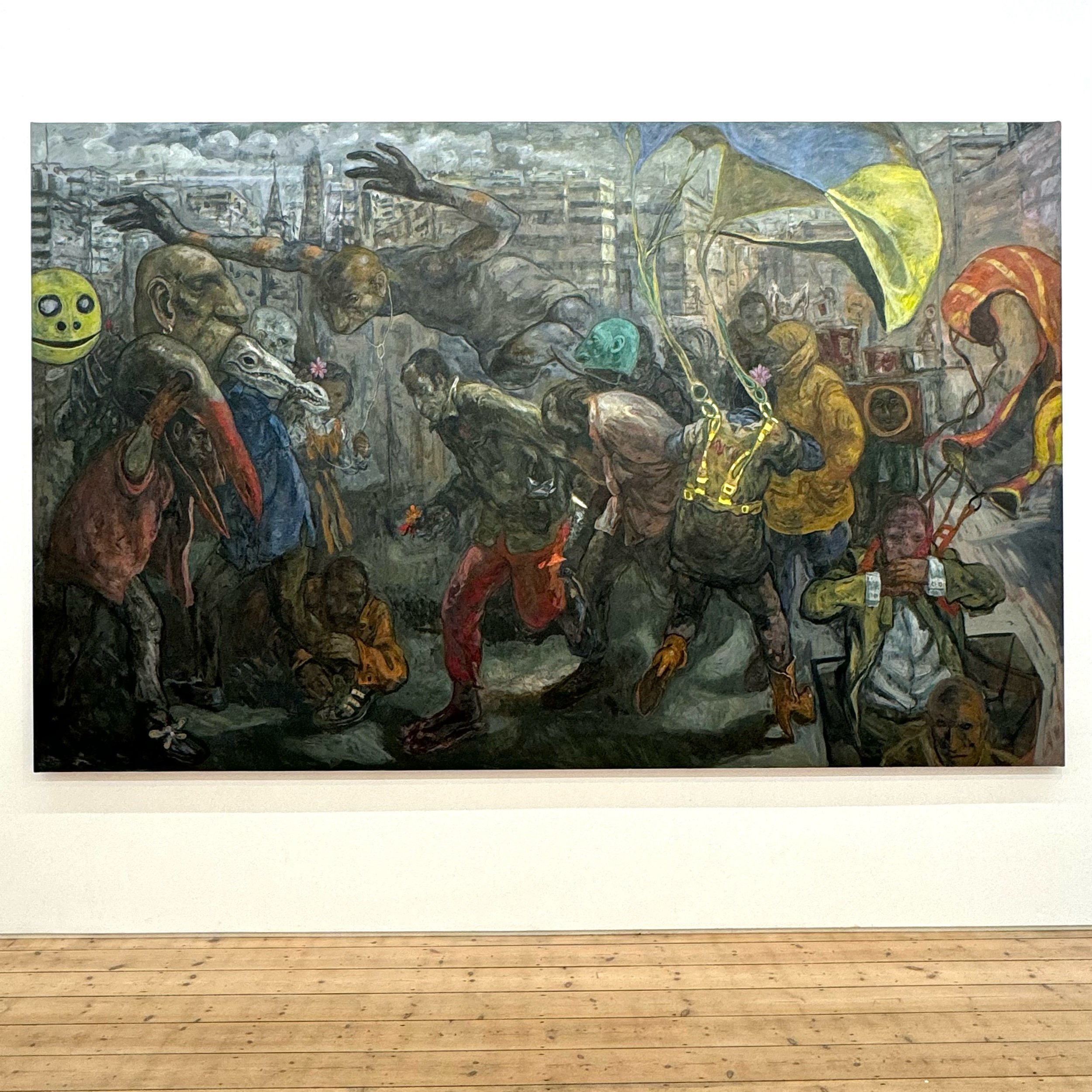
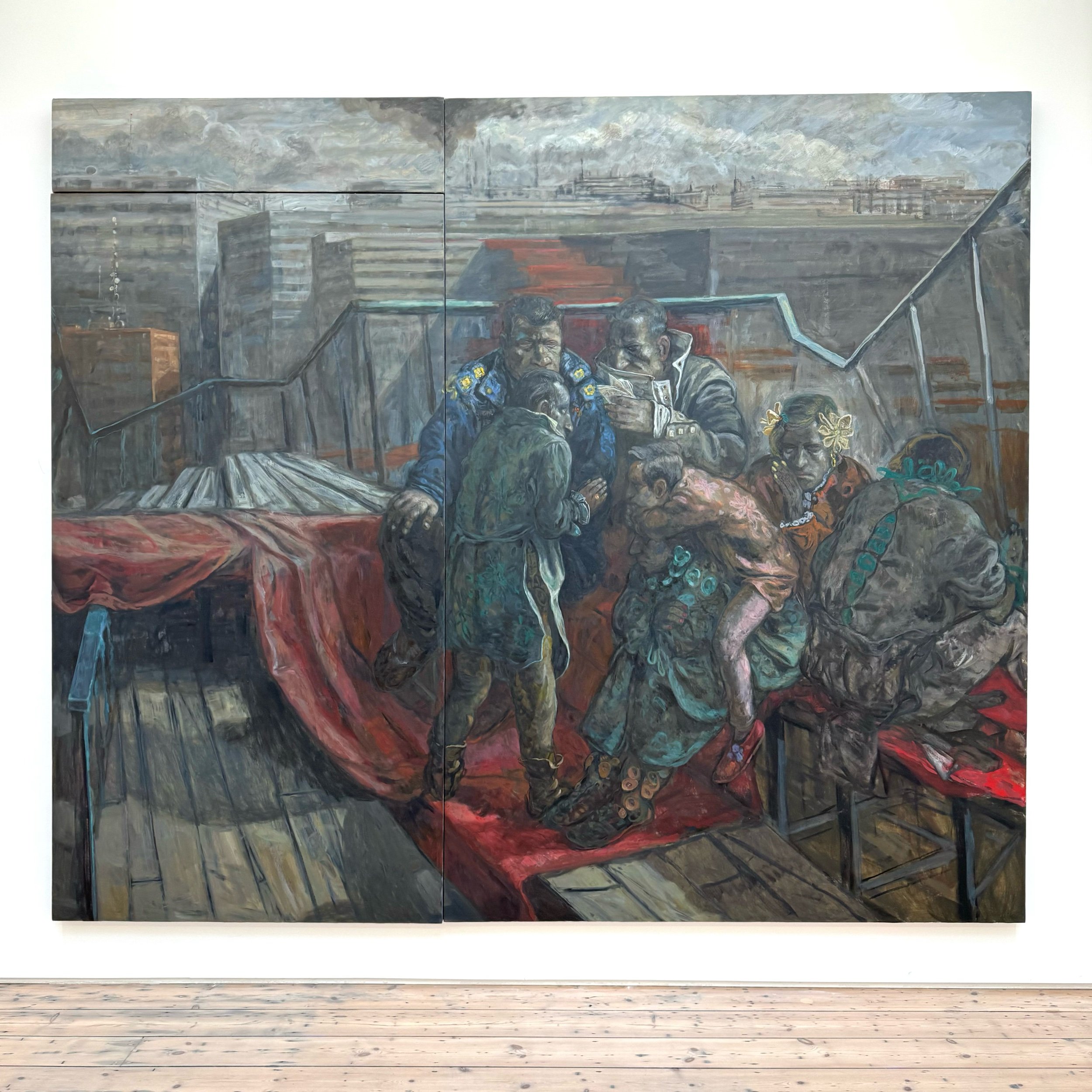
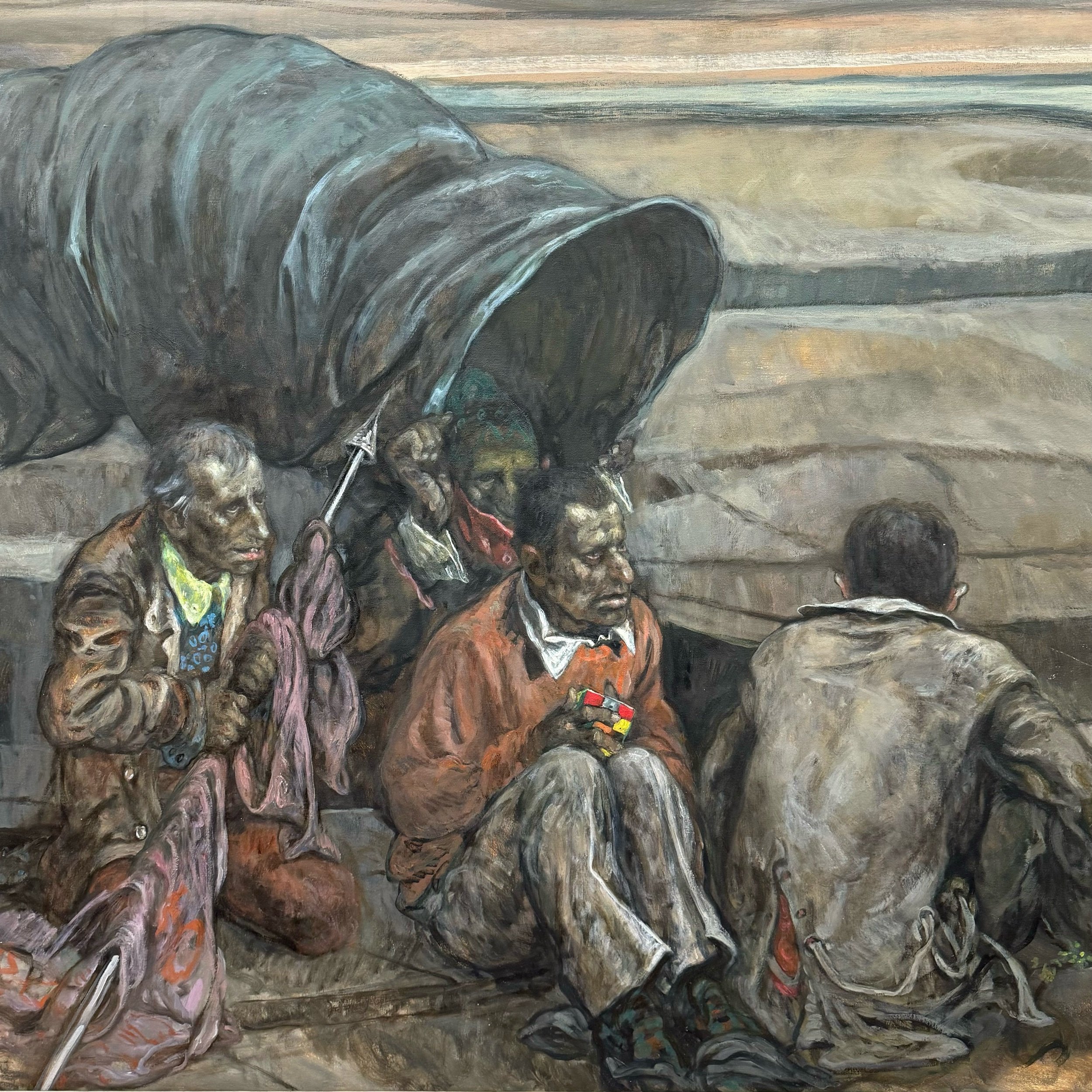
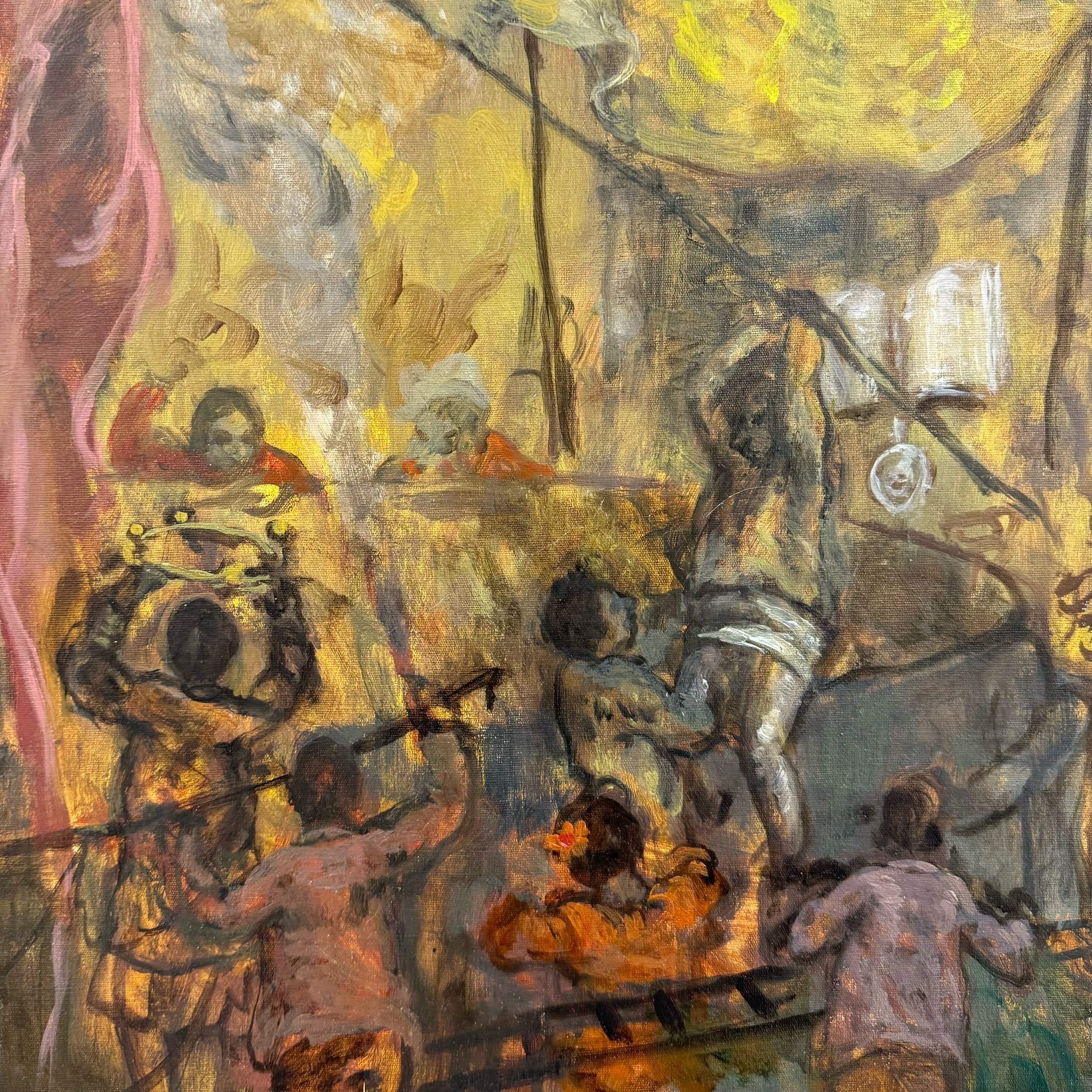
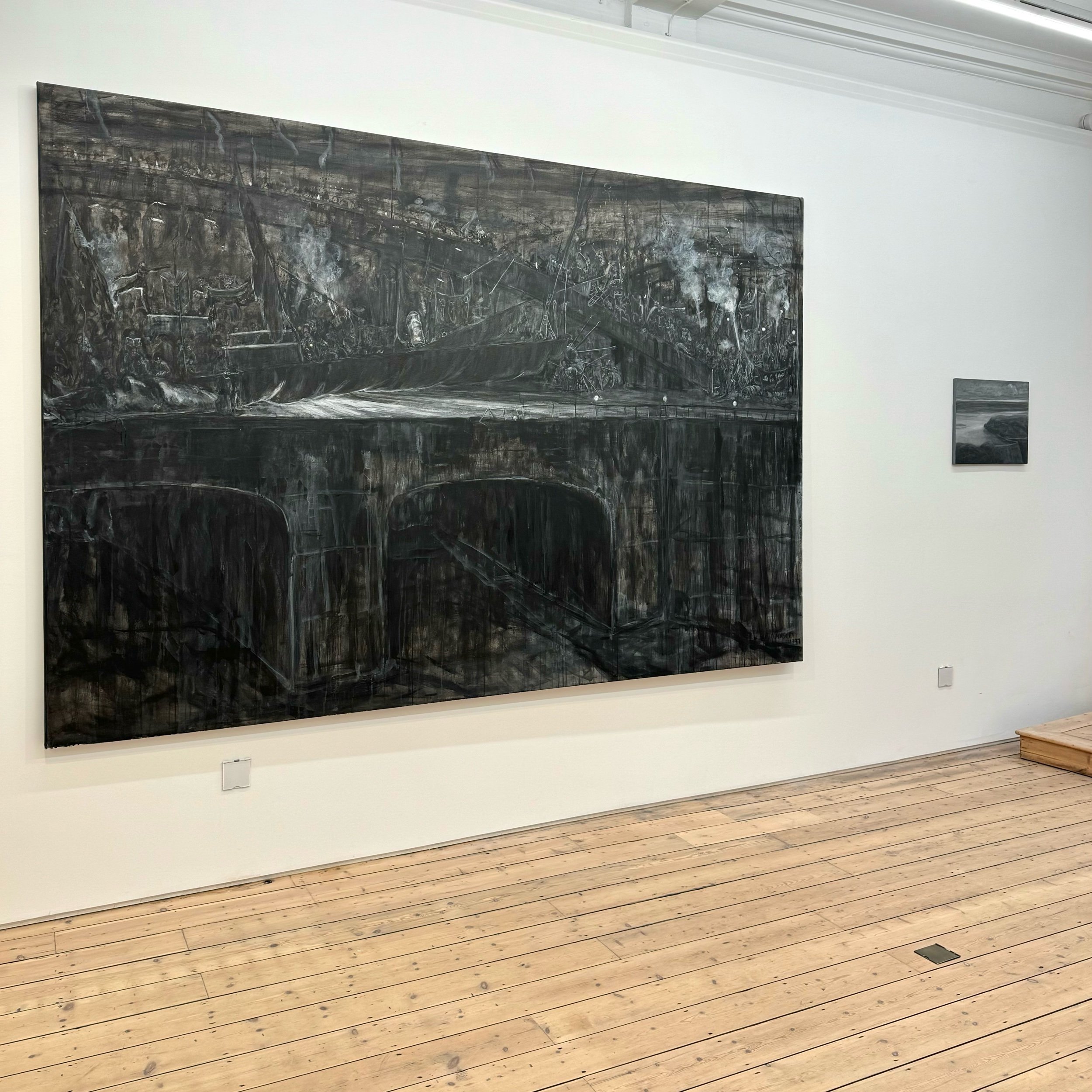
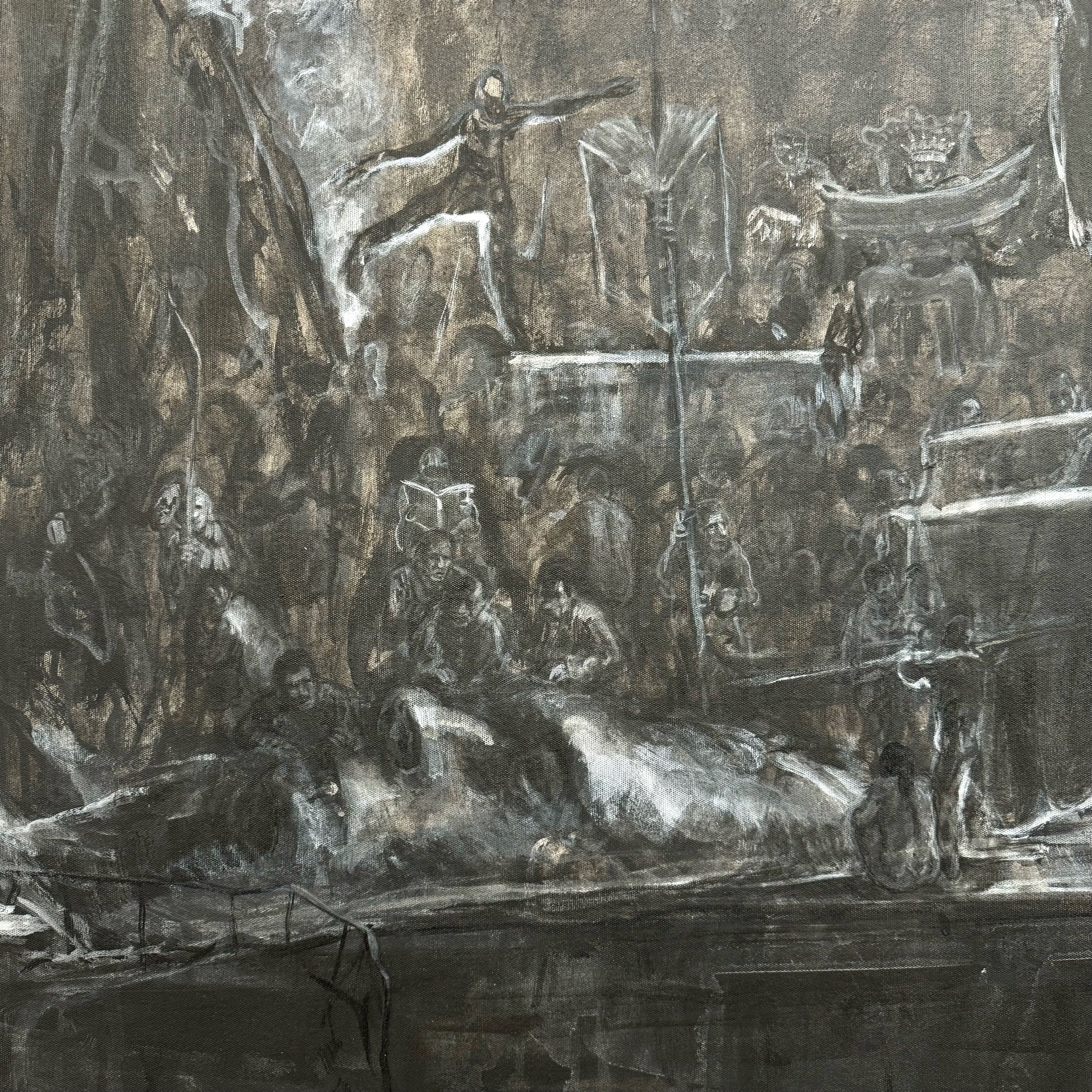
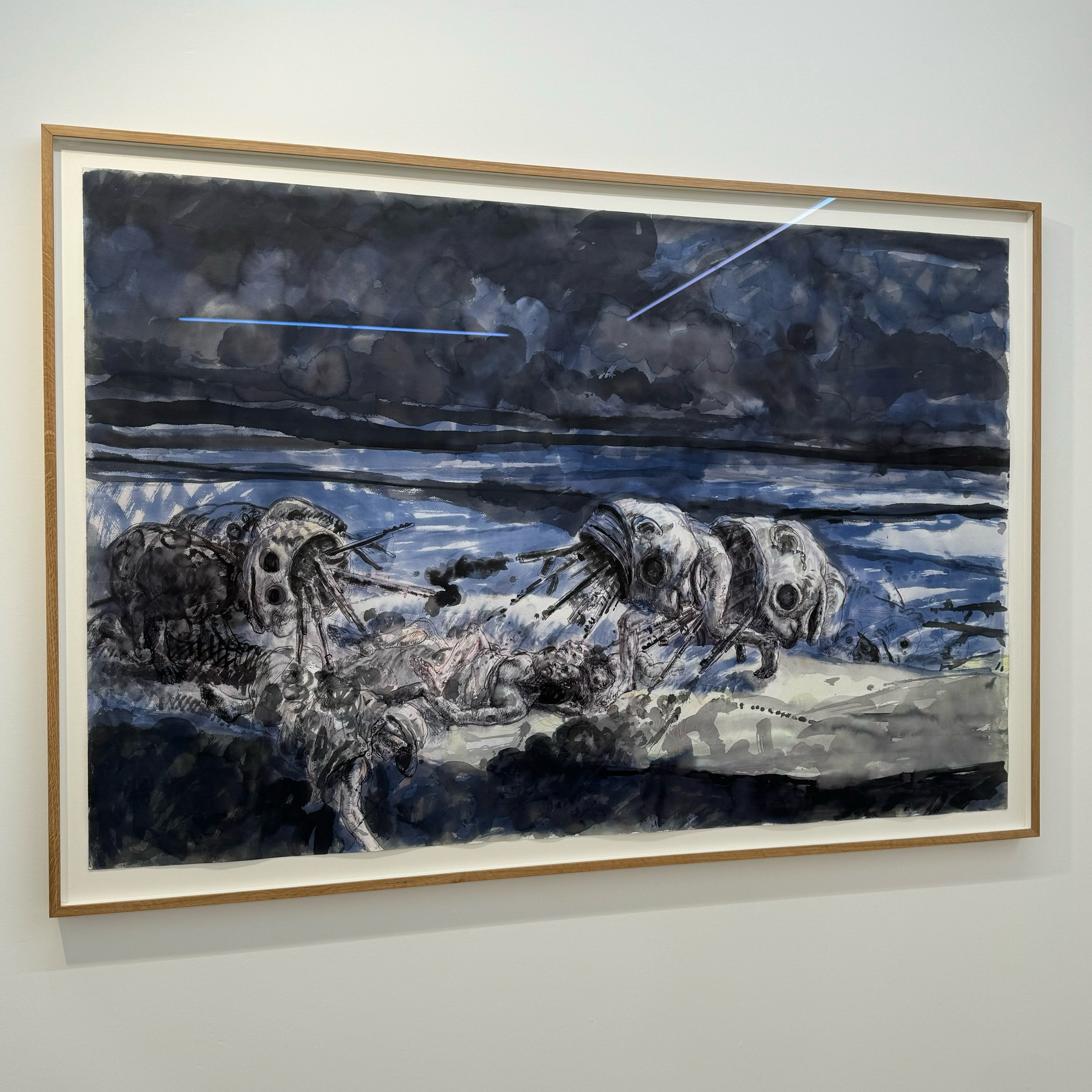
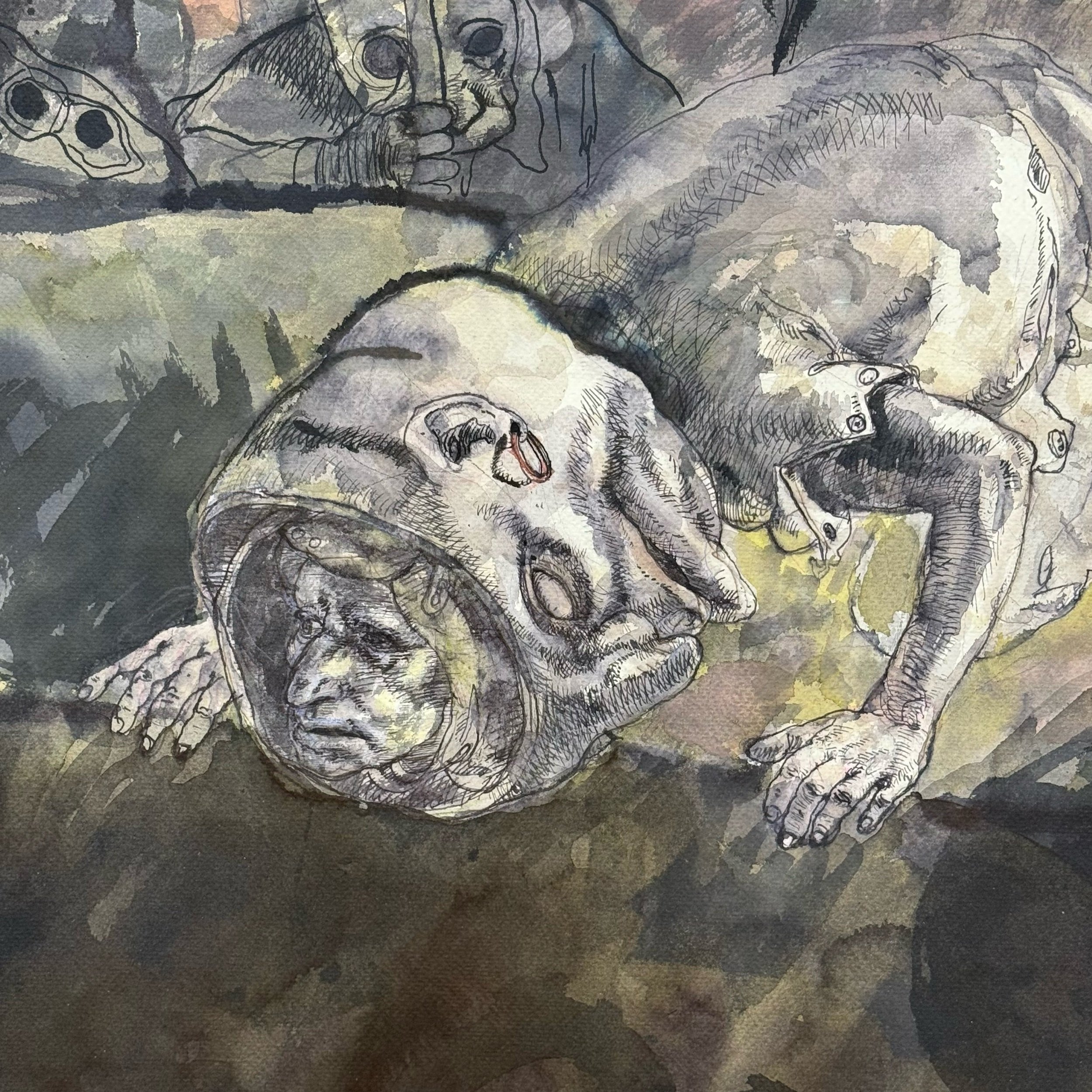
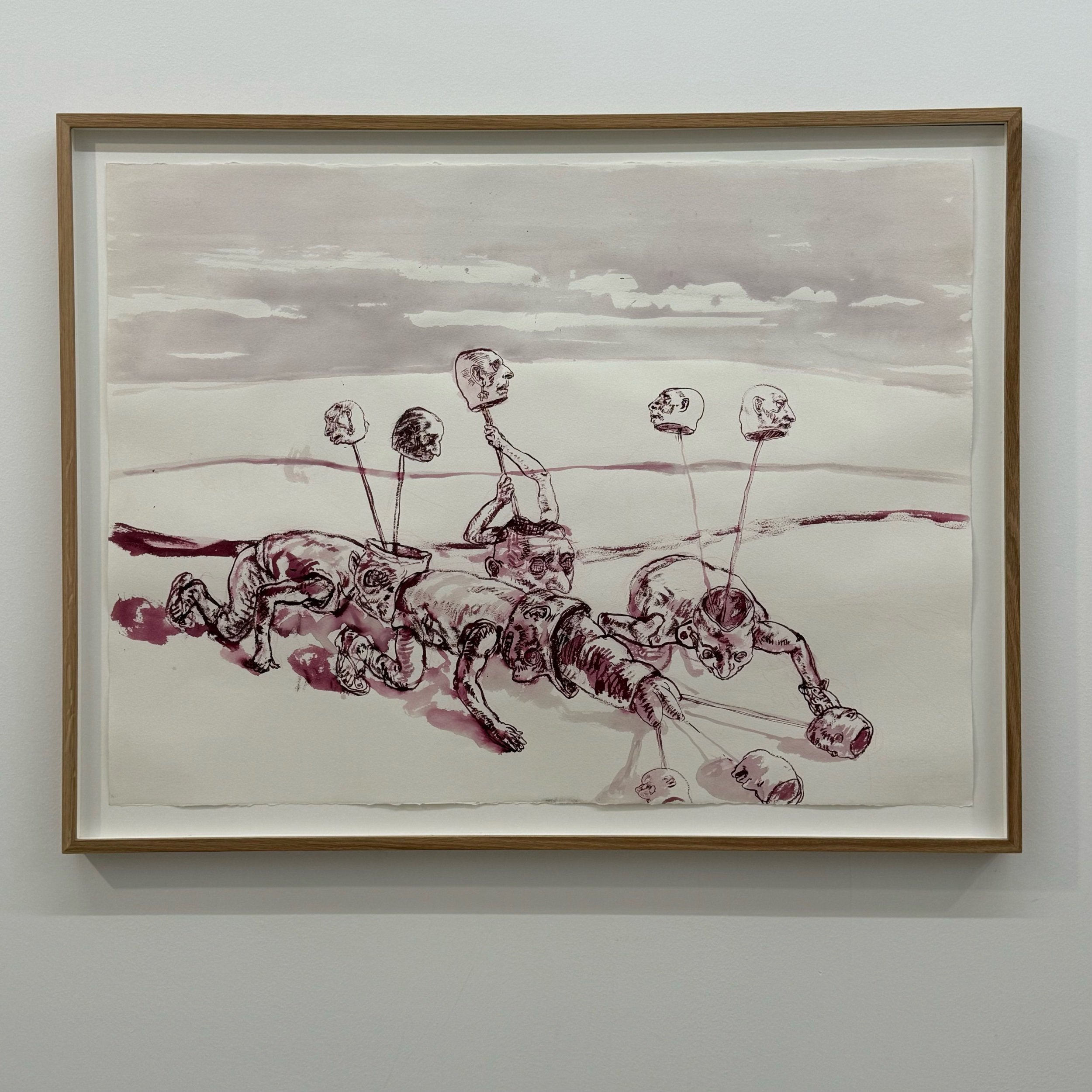
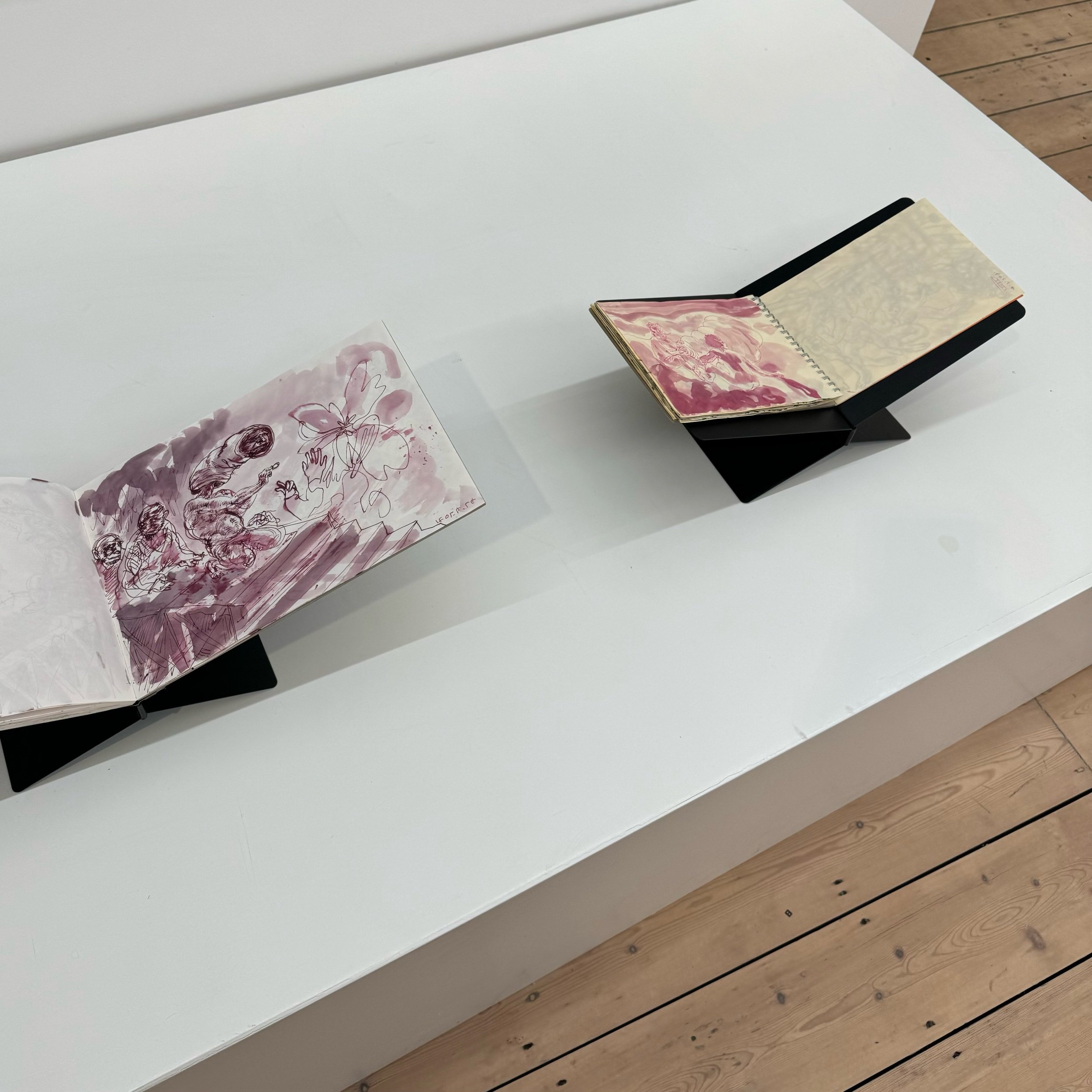
Sometimes when I look at art I worry that I’m missing some of the meaning, especially when looking at art from foreign cultures. Those are the moments when I become super friendly with the gallery staff, and the current show at Ab-Anbar has many pieces that benefit from their insider info. But if you find yourself alone, just give it a considered look. The gist of the imagery is hard to miss. Like a good Pixar film, the basic plot is easy to follow, but there are layers of subtle details for the adults to unpick.
Majid Fathizadeh was born in 1977, two years before the Islamic Revolution. He lives and works in Iran and although his gallery bio is politically neutral it’s hard to imagine anyone, much less an artist, not being impacted by the last three decades of protests and ideological struggles in the country, many of which are still ongoing. When living under the rule of a regime people often suffer in silence, but rarely alone. Maybe that’s why Fathizadeh paints big, almost life-sized figures, gathered in groups commiserating. Some of the scenes reminded me of wartime Blitz photos, where it’s evident that no one really knows anyone next to them and no one wants to be there, yet there they are, stuck in it together. Forced to huddle close, just trying to survive.
But… survive what? In Fathizadeh’s works it’s never clear what’s happening or where anyone is. Are they at the edge of a modern city or in the middle of a dystopian world? They depict curious situations. Perspectives aren’t always correct. Women and children rarely feature. It wasn’t until my second viewing of the large painting ‘Antichrist’ that I noticed the left third of the work wasn’t a giant shadow but three women in burqas, hidden in plain sight. Compare them with the outrageously strange costumes in another large work, ‘Red Rose’. The scene looks like a refugee rescue has been invaded by a Carnival procession.
There are no overt references or clues to the cause, but society is clearly suffering. That’s evident throughout the dark and dimly lit works, with limited use of colours seen most prominently in the badges and tailoring of service uniforms. In the largest painting, ‘The Bridge’, you’ll find the smallest figures, and have to get quite close in order to see any of the details. Though not as visually twisted as Hieronymus Bosch, the scenes you’ll discover are similarly overflowing with curious interactions of a dubious nature. Is this the Siege of Troy or a drunken Hogmanay?
Students of art history might see the influence of Western European painters from Goya to Caravaggio but one recurring modern item will certainly catch everyone’s eye: a Rubik's Cube. I’d assumed these were symbolic of life’s complexities. They’re notoriously hard puzzles to solve for anyone except the speedcubing savants that easily complete them in less than 10 seconds. Except here the artist uses them as a visual shorthand for racial or religious cleansing, since you can’t ‘win’ until each side is a uniform colour.
The scenes are confusing, stark and harrowing and that’s just the first floor!
Downstairs in the basement a series of smaller ink and watercolour works divert you away from reality. Part dystopian sci-fi, part indigenous ceremony, these works are much easier to digest thanks to their outlandish imagery and comic-book style visuals. Masks and costumes are a recurring theme. Some characters and scenes get quite dark in tone, but overall the series feels like a lighthearted reprieve compared to the heavy intensity upstairs. In spite of this, they don’t hold my attention for very long. I am drawn back up the steps, to get absorbed by the emotions that I don’t ever want to have to feel for real.
I might not have understood every nuance in the works, but it’s hard to shut out empathy when you can still smell the oils on canvasses depicting human misery. This is a show that stuck with me long after I left the gallery. Western news and media often feels biased regarding the Middle East, and I would probably classify myself as an uninformed source when it comes to discussing it. And even though art is also inherently biased — how can it not be? — I found it impactful to experience such intense imagery from an artist with lived experience of the region.
Plan your visit
‘Ideologues of the Game and Other Seekers of the End’ runs until 24 Feb.
Visit ab-anbar.com and follow @ab_anbar on Instagram for more info about the venue.
Visit the gallery’s artist page and follow @majid.fathizadeh.n on Instagram for more info about the artist.
PLUS…
Check the What’s On page so you don’t miss any other great shows closing soon.
Subscribe to the Weekly Newsletter. (It’s FREE!)
